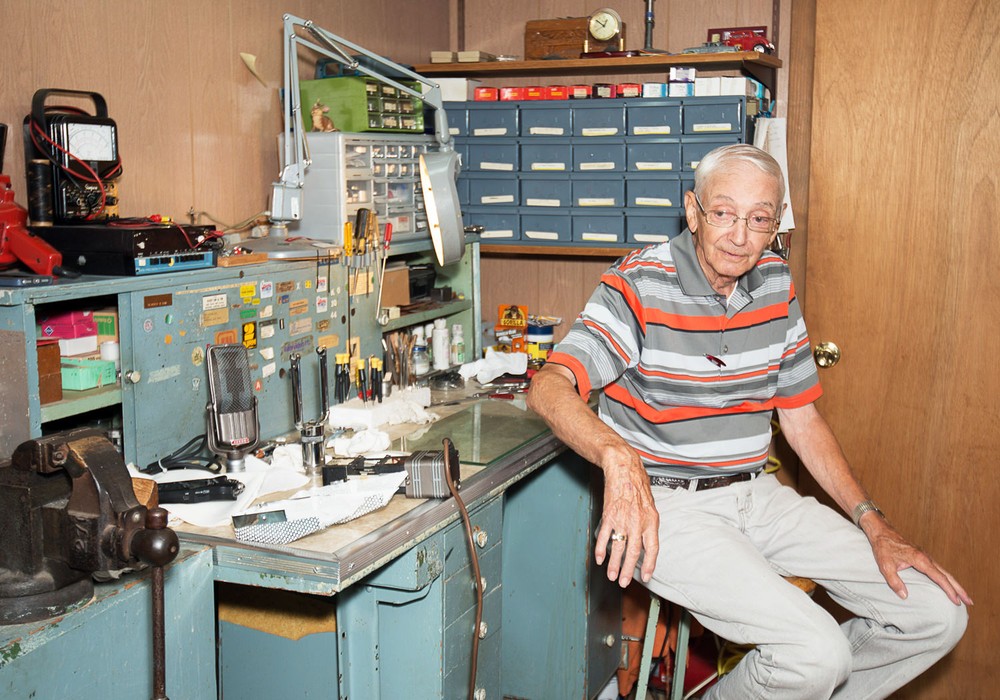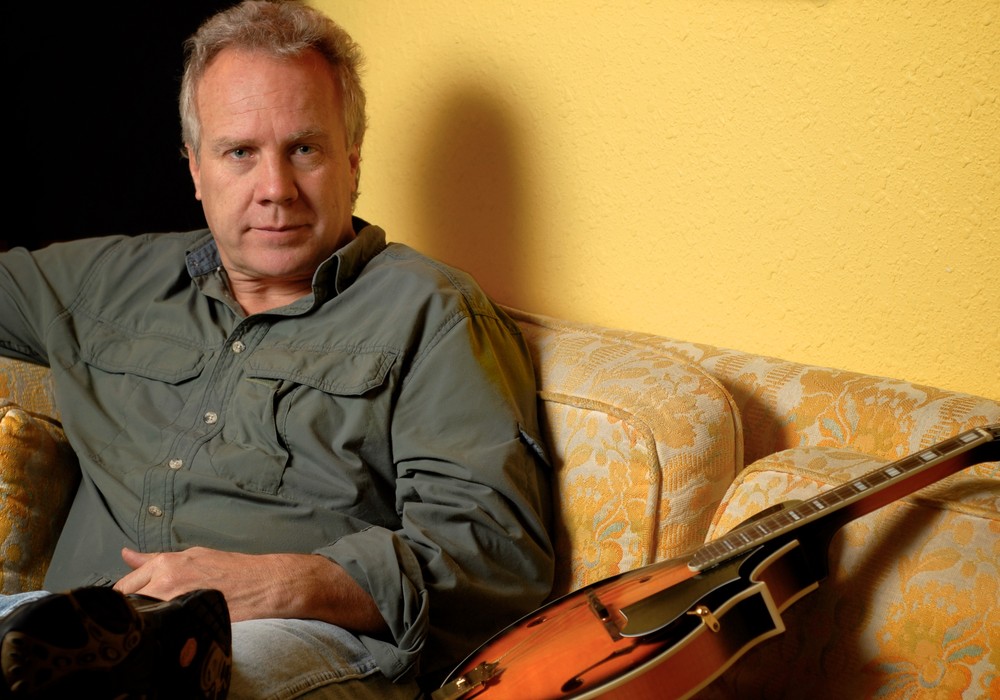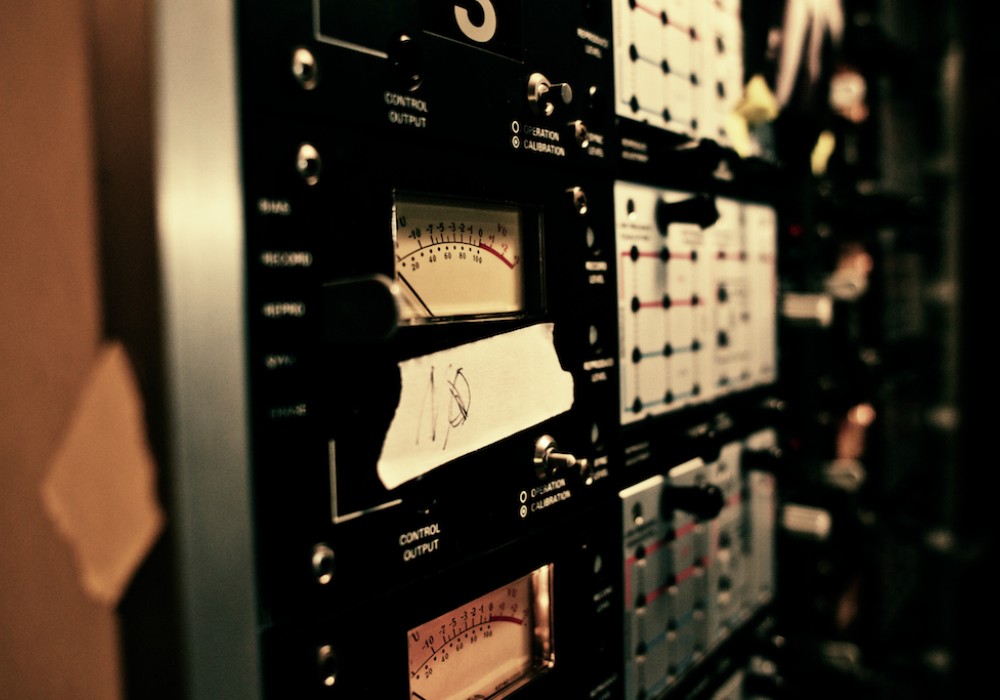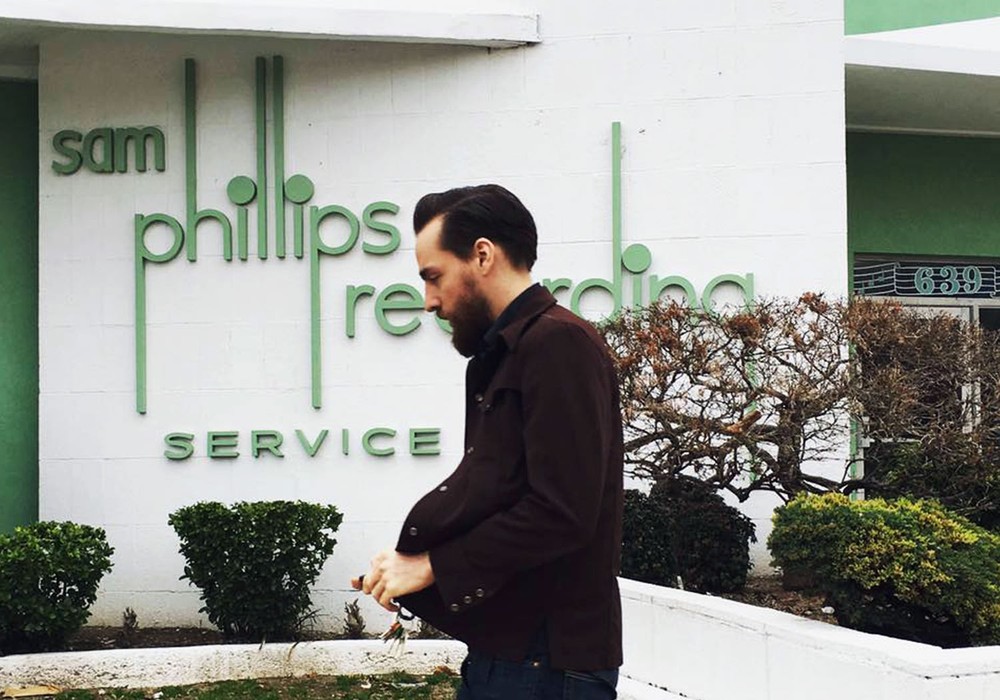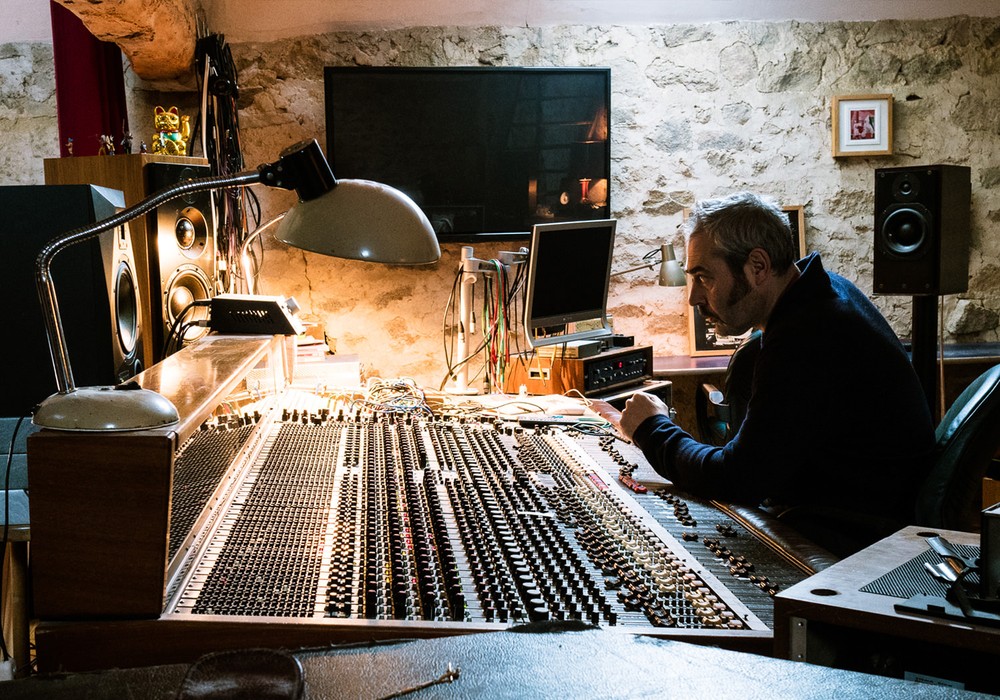John Peluso has been quietly providing classic-styled mics to some of the biggest names in music for over ten years. Peluso's line of vacuum tube condenser, solid-state condenser, and ribbon microphones are hand assembled and tested, and surprisingly affordable.
What was the mastering process at Chicago Stereo Mastering like?
We had a calibrated speaker system, equalizers, a Neumann disk-cutting lathe. Basically you take the 2-track tapes and enhance them, make sure that the low-end phase was correct. When you cut a record, low-end phase is really important, because if you have any out-of-phase material below about 200 cycles, it'll cause the cutting stylus to lift off the record and create a record that skips. That's all gone now that everything's digital, that doesn't matter. But it forced people to make records that were very much in-phase. Your ear is incredibly sensitive to phase and phase-amplitude. You can hear phase changes that are a tenth of a degree. Well, you can't even measure that on test equipment!
You had already been doing recording before this?
I had been doing recording since I was about twelve years old. My dad came home with a tape recorder when I was eight years old. And I'd been mucking around with tape recorders and microphones ever since.
That's excellent. Was that a reel-to-reel?
It was a reel-to-reel, yeah. That was the only kind there was back then! Magnecorder PT6, I think
You could do sound-on-sound and all that?
You could do sound-on-sound. The first one we had was just very simple — a single-channel mono half-track recorder, but it was still fun. By the time I was a little older I got a Viking deck, but it didn't have any electronics, so I bought a copy of the Audio Cyclopedia, saw some schematics for tape electronics, and built myself a set of electronics for it. That was my first recorder that was sound-on-sound. Then I got the best tube recorder ever made, the Magnecorder 728; built to full military spec. When I was a freshman in high school, I built an 8-channel audio console. While everyone else in electronics class was building little radios or something, I laid out circuit boards and built an audio console using schematics out of the Audio Cyclopedia. When I was about 15 years old I had picked up a set of Teladi K 120 microphones at a local HAM-fest. They're German large nickel diaphragm condensers, but they don't have output transformers in the microphone body and they were high-impedance out. They tended to hum, so I got started working on microphones with them. Tore them down, cleaned them up, mounted little Shure microphone transformers inside the bodies, built new power supplies for them, made new cables for them, and that was my first pair of real microphones.
Do you have any comments about nickel diaphragms?
The pure nickel, solid metal diaphragms have a really sweet high-end. They don't quite have the low-end reach that a more compliant, Mylar diaphragm would have. A couple of years ago picked up a matched pair of them from the U.S. Coast Guard that were unused.
Unused?
Unused. They're just beautiful. They're still in their little cardboard boxes. They're from the 1940s. I've yet to do anything with them. They came without power supplies or connectors or cables, so there's some custom work that needs to be done on them.
I'd imagine that's not an XLR connector.
No, the pins are the same as a U 47 connector. An old Tuchel connector, but the screw-in part is different. So, I've got to machine new collars for U 47 connectors to fit the bottom of them.
You do your metalwork?
One of the reasons our microphones are priced the way we are is that we do all our metalwork in China. On the microphones. On the preamp series that we're just getting ready to come out with, we'll do all the U.S. metalwork.
What was the first piece of gear that you designed on your own?
It would have been a tube preamp with our company at the time, Dupage Sound. My wife manufactured them, before she was my wife. We designed a preamp, a direct box, and power amps. I know all the preamps and power amps are still out in the field.
How many people are employed by Peluso?
It's really a team "behind the gear" here. We collaborate on everything. We have three full-time, which is myself, my wife Mary, and my stepson — Mary's son, Chris. And then we have three machinists at Virginia Tech — a couple of engineers that help us part-time. Our next-door neighbor here is the one who runs the machine shop for the Virginia Tech physics department. Mary builds microphones and handles all the finances and relationships with our suppliers. Mary's an amazing buyer — she has great relationships with our suppliers. Chris builds microphones, and he's starting some design work. He's doing all the layout and aesthetic design on our preamps, which is his first major design project here. Chris was trained as an architect and worked in a couple of big architectural firms. I designed about 135 recording studios, and I think I did eight of those with Chris over the years, starting when he was in college and just beginning to study architecture. One of the studios, they loved it so much when they lost their lease they literally disassembled it and moved it to a new building. I was Chief Engineer at Streeterville and helped design their two music rooms we put in in the late '70s and early '80s. I specialized in good-sounding, low-cost designs — you could build a studio and not break the bank, by using readily available materials instead of specifying huge amounts of exotic stuff. Just using the math, and knowing, knowing this physics of sound. So using the theory that if the low-end is under control, you can gobo out any mid-range or high-end problems you may have in a particular session.
So it's about controlling the low-end?
If the low-end isn't under control, and it overpowers the room, then it's everywhere. It gets picked up by every mic, all out of phase from the mic you wanted to pick it up with. So you get muddy-sounding recordings. So the studios I designed, I tended to really concentrate on low-end trapping.
And was that just a matter of building the right bass trap in the right place?
Building continuous bass traps in the walls that connected to bass traps in the ceiling and down the other walls, to actually get the correct wavelengths to trap down to 40 or 20 hertz. So using a series of baffles and the bass trap construction so that it was a labyrinth, so you could get longer wavelengths.
Is that similar to quarter-wave speaker cabinets, and transmission lines, and that kind of thing?
Yes, yes. Definitely. And I can't say that's an original thought; I saw it at A&M studios. They had massive bass traps under their A room. They used an entire floor of the building it seemed like, as a bass trap under their A studio.
That would be awesome. I need some bass traps, I can tell you that.
I don't care what kind of foam you stick in the corners, or what kind of little box diffusers you hang on the wall. They don't go down to 20 hertz! The wavelength of 20 hertz is a really long wavelength, and you need that space! So you need to create a path that's equal to the length of the lowest frequency you're going to trap. 56.5 feet for 20 hertz.
A 56 foot long labyrinth?
Yeah. Easy if you've got a warehouse-sized studio. You can trap down to 20 hertz. But when you're building studios in small spaces, you need a labyrinth. You need to start the bass trap on one the wall and bring it up to the ceiling, all through labyrinth, and back down the other side of the furthest wall.
The business of building studios has changed.
Now most ad agencies have their own in-house studios. The advent of DAWs changed everything. The prospect of building a studio isn't a multi-million dollar challenge. Now for ten or twenty thousand dollars, you can own a couple of microphones, a Pro Tools rig, and some preamps or a small console, and you're a recording studio.
Yep, although the acoustic space, the challenges of that have not changed.
No, no. And that's, that's what I hear on a lot of records these days...
Bad spaces.
People have forgotten that all those records we loved in the '80s and '70s were made in these amazing acoustic spaces. A lot of people think, "I need vintage equipment to get that sound." But, a lot of times what they're hearing is the room the music was recorded in.
People are just recording dry and putting a different reverb on every source.
Yeah, yeah! And dry in a drywall room. Drywall has a resonant frequency of about 200 hertz on stud walls, so you get all this upper low-end or lower mid-range mud that is in the same range as fundamentals of a lot of instruments.
To me, it's the musician, then the space, then the microphone in terms of order of importance for recording.
Yeah, the musicians have to be able to be able to play, and be able to get the correct tones out of their instruments. That's the beginning. And they have to be in a space that accentuates that. Then you put up the right mic. And as microphones go, I'm the first one to say there's no magic bullet. Our mics might sound great on some instruments, and someone else's mics might be the choice for something else.
What's your favorite non-Peluso that you own?
I really love [Neumann] KM 56s and KM 88s, and I own some of both of them. Transformer-coupled, multi-pattern nickel small-diaphragm. The KM 56 is a tube microphone, and the KM 88 is the FET version of it.
Those are pretty popular for recording orchestras?
Yes. Guitar and banjo players love them. Terrific transient response. They start rolling off at 80 hertz, so they're not going to give you that giant low-end like a large diaphragm condenser will, but they give you that sparkling mid-range and high-end just with incredible transient response and clarity.
Do you have any final thoughts for readers?
We'll never sell out. Chris is in the business, and he's going to take over. He's currently earning percentages into the corporation every year from Mary and I so that when we retire, he'll be running the company and be a major owner of it. Our current production building is about a 300-yard walk from my house. It's a five-mile drive from where Chris lives. We have a 200-acre piece of property here, so we have all of our facilities on this one piece of property.


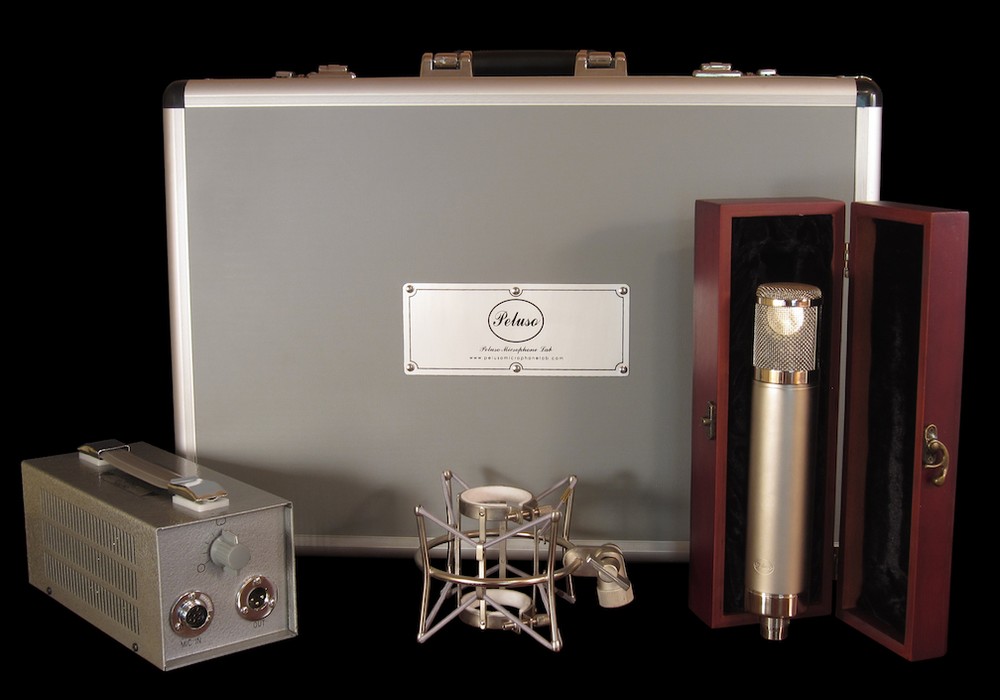
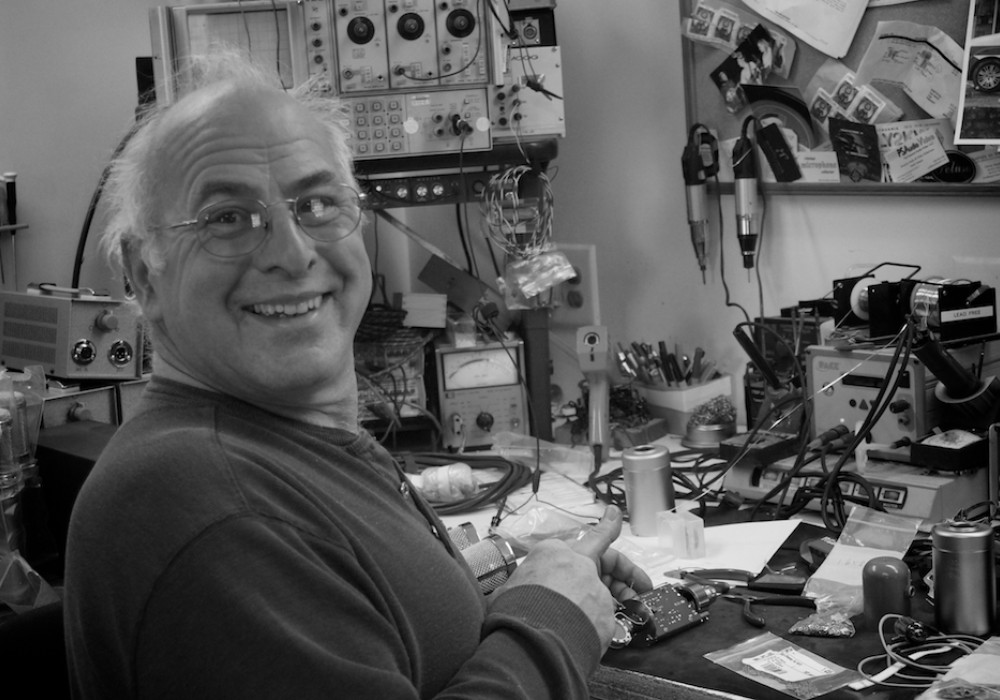


_disp_horizontal_bw.jpg)
_display_horizontal.jpg)
